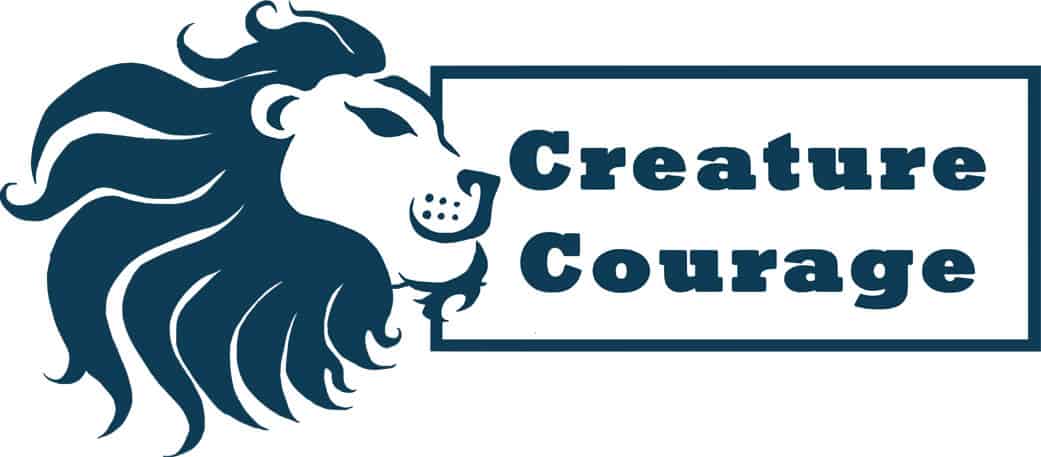Buzzing with Intrigue: Meet the Hornet
Hornets often inspire fear in many people across the UK. Their large size, loud buzz, and painful sting contribute to their reputation. However, the truth about hornets is far more fascinating and beneficial than many realise. By learning more about these misunderstood insects, we can overcome fear, build empathy, and even find admiration for their vital role in nature.
Get in Touch With Creature Courage about How to Overcome Your Phobia
What Are Hornets?
Hornets are a type of wasp, specifically the largest species within the wasp family. Hornets are the larger cousins of the yellow jacket wasp, with some reaching up to a whopping 2 inches in length! You might say they look more intimidating, but they’re often gentler than you might think – there’s no need to use the underground bunker quite yet
In the UK, the most commonly found species is the European hornet (Vespa crabro). Unlike their aggressive reputation, European hornets are generally non-confrontational and will only sting when threatened.
They live in social colonies typically led by a queen. These colonies may contain hundreds of individuals during the height of summer. They construct intricate paper-like nests, often found in tree hollows, roof spaces, or sheds.
The queen starts by chewing up wood fibres and mixing them with saliva to create a papery pulp. She uses this to form the small nest. As the colony grows, worker hornets take over and continue building, creating a large, layered structure made up of hexagonal cells. The finished nest often looks like a grey, paper football and can house hundreds of hornets by late summer.
Why Are People Afraid of Hornets?
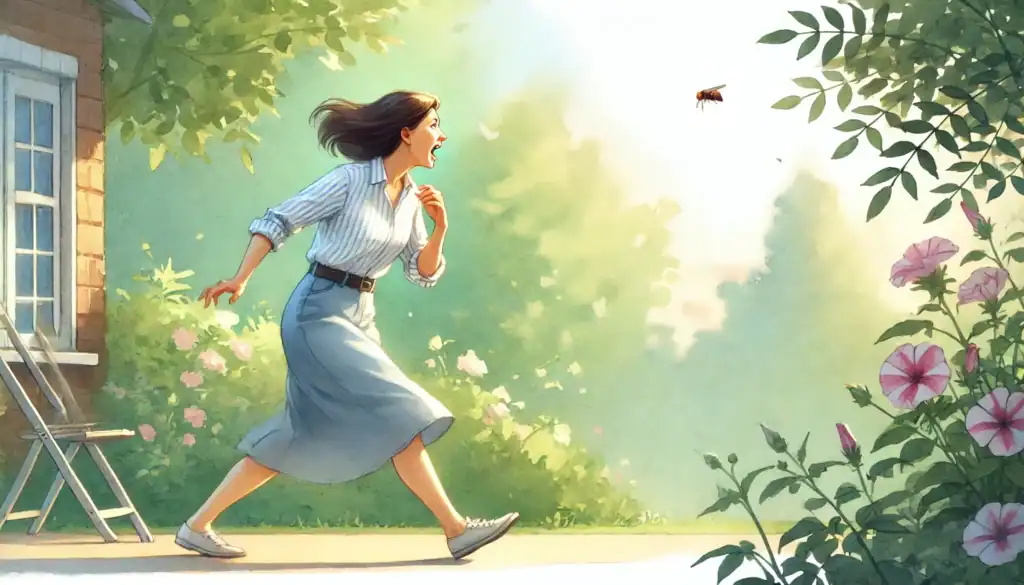
The fear of hornets is a specific part of Spheksophobia (fear of wasps), can stem from a variety of sources. Many phobias are learned through experience. A painful sting, witnessing someone else’s fear, or hearing dramatic stories can create lasting anxiety. Culturally and through the media, hornets are portrayed as bad or even evil creatures. Therefore, rarely is their usefulness to the environment and other positive attributes ever emphasized.
Studies suggest that around 3–7% of people in Western countries suffer from a specific animal phobia, with insect-related fears being among the most common. Children are particularly susceptible, often picking up phobias from parents or peers.
How a Fear of Hornets Can Develop
Most animal phobias are rooted in the fear of being out of control and uncertain. What can be more unpredictable than a hornet buzzing around after all? Usually, an animal phobia is formed in childhood, however, adults can also form a phobia.
Phobias develop through classical conditioning. A neutral stimulus, like seeing a hornet, becomes associated with a traumatic event (like being stung). Additionally, a child can also learn to become afraid by regularly observing a parent or other caretaker being afraid of hornets.
A person with a fear of hornets might show the following symptoms:
- Panic or anxiety at the sight or sound of a hornet
- Rapid heartbeat or shortness of breath
- Sweating or trembling
- Avoidance behaviour, such as refusing to go outdoors in summer
- Crying or screaming, especially in children
- Freezing or trying to flee when a hornet is nearby
- Irrational thoughts, like believing they’ll be stung even if the hornet isn’t close
These reactions can vary in intensity depending on the person and how severe their phobia is. Over time, the sight or even thought of a hornet can trigger panic. Avoidance behaviour around hornets reinforces the fear to the survival part of the brain, therefore increasing the fear more and more.
How Phobia Limits Your Life
Avoiding hornets can lead to unnecessary restrictions. People might avoid outdoor activities, nature walks, or even gardening. Additionally, a hornet phobia might cause someone to always close their windows even when its very hot in summer. This avoidance continues to feed the phobia and reduces quality of life.
Breaking free from fear opens doors. Imagine enjoying picnics, holidays, and garden work without anxiety. Imagine enjoying a cool breeze from your window on a hot day. Treating phobias brings confidence and a sense of freedom many never thought possible.

Myths About Hornets
Many myths about hornets create unnecessary fear. By replacing these with facts, we can build understanding and reduce anxiety.
- Myth: Hornets are naturally aggressive.
- Fact: Hornets are not aggressive by default. They are defensive. If left alone, they do not see people as a threat. Most hornet stings occur when a person accidentally disturbs a nest or swats at them. Staying calm and giving them space usually prevents conflict.
- Myth: Hornets chase people without reason.
- Fact: Hornets do not randomly target humans. They only pursue someone if they feel their nest is in danger. They do not chase for fun or out of spite. Hornets are focused on feeding and protecting their colony. Simply walking past one does not make you a target.
- Myth: A hornet sting is always fatal.
- Fact: For most people, a hornet sting is painful but not deadly. Serious reactions, such as anaphylaxis, are rare. According to the NHS, stings from wasps and hornets are usually manageable with basic first aid. If you have known allergies, always carry appropriate medication.
- Myth: Hornets attack without warning.
- Fact: Hornets give clear warning signs before they sting. These may include loud buzzing, hovering, or specific flight patterns. These actions are meant to scare away threats rather than harm. Recognising their signals can help you avoid a sting.
- Myth: Hornets are useless pests.
- Fact: Hornets are beneficial insects. They control garden pests by hunting flies, caterpillars, and other insects. Some species also help with pollination. Without them, pest populations could grow uncontrollably, harming crops and gardens.
These myths persist due to fear and misinformation. However, with accurate information and calm behaviour, we can safely and peacefully coexist with hornets. For more insights, see the Natural History Museum’s hornet facts.
Life Cycle of Hornets
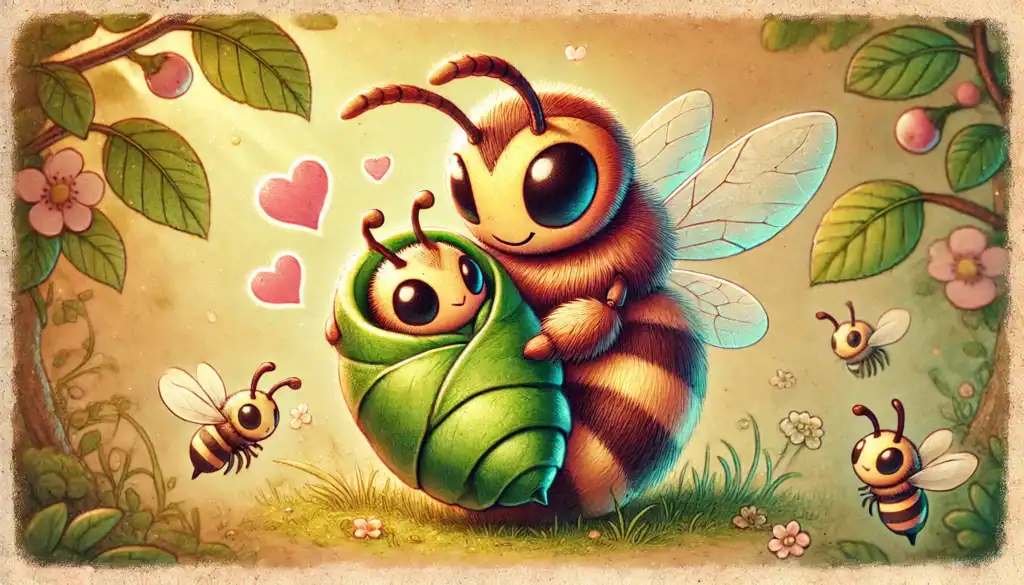
Hornets undergo complete metamorphosis with four distinct life stages: egg, larva, pupa, and adult. The queen starts the colony in spring by laying eggs. These hatch into larvae, which she feeds until they pupate and become adult workers. The colony grows through the summer and begins to die off in autumn, leaving only new queens to hibernate and start the cycle again the following year.
Adults do not eat solid food. Instead, they consume sugary substances like fruit juices, nectar, and tree sap. It’s the larvae that require protein. Adult workers gather insects, chew them into a paste, and feed this to the growing larvae.
In return, the larvae secrete a sweet liquid that the adults consume. This mutual exchange supports the survival of both. But by late summer, new queens are raised, and the colony’s energy shifts. The larvae stop producing food for the workers.
Without their sugary reward, workers become increasingly desperate. This is often when we see hornets hovering around bins, fallen fruit, or sweet drinks. They’re not being aggressive – they’re starving and nearing the end of their short lives.
Most adult workers are evicted from the nest once their role ends. They die alone, often cold and weak. By seeing them in this vulnerable state, we can shift from fear to compassion. These insects have worked tirelessly all summer, and their final days are a quiet struggle to survive.
According to entomologists and recent studies from the Natural History Museum, understanding this seasonal behaviour helps reduce panic and improves our ability to coexist peacefully.
How Hornets Help Humans
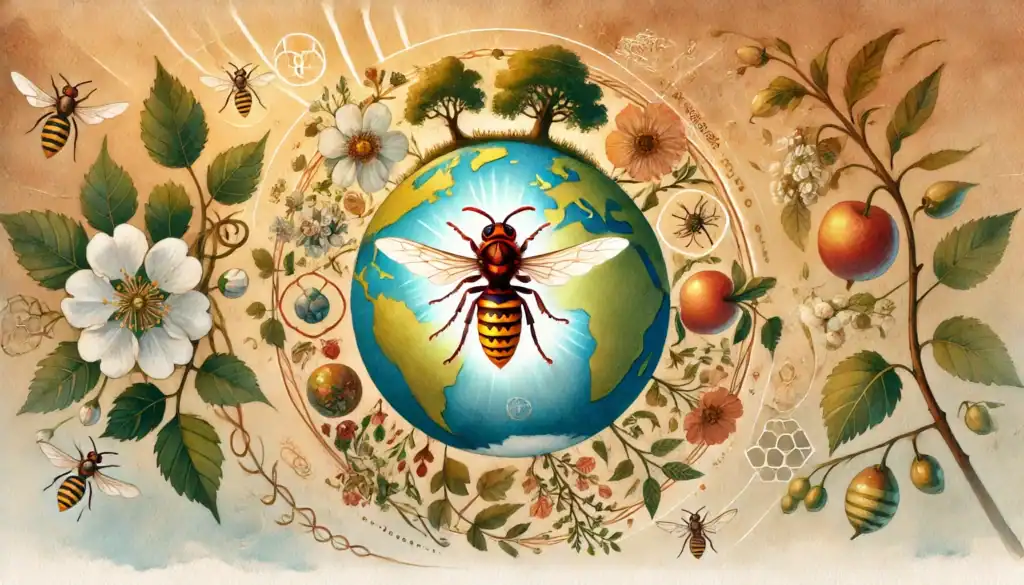
Hornets play a crucial role in ecosystems. They are natural pest controllers, feeding on flies, caterpillars, and other insects that damage crops. This makes them valuable allies in gardens and agriculture. Their role in balancing insect populations supports biodiversity, which is essential for a healthy environment.
While feared for their sting, hornets are also really important pollinators. Like bees, they help facilitate plant reproduction as they move from flower to flower. Some plants even rely exclusively on hornets for pollination!
The Value of Compassion and Curiosity for Hornets
Understanding hornets builds empathy. These insects are not malevolent, but purposeful creatures doing their part in the natural world. Observing their complex societies, communication, and architectural skills can turn fear into fascination.
By replacing fear with knowledge, we foster coexistence and appreciation for all life forms, even those we once feared.
Living Peacefully with Hornets
It is entirely possible to live peacefully alongside hornets. Here are some tips:
- Do not swat at hornets; remain calm and still.
- Avoid wearing strong fragrances when outdoors.
- Keep food covered during picnics or barbecues.
- Seal bins and composters tightly.
If you feel scared when encountering a hornet remember to breathe slowly and deeply. Force yourself to relax your muscles and smile. This tells your brain you are not in danger and will help you naturally feel calmer. Encourage yourself about your ability to handle the situation and positive attributes about hornets. You can also try to find something else to focus on and distract yourself.
If the fear of hornets feels too overwhelming to address yourself and you feel like it is affecting your quality of life, you should consider getting some therapy. Fortunately, with the right help, many animal phobias can be addressed very quickly within only a few sessions.

Effective Phobia Treatment with Creature Courage
Phobias are most effectively treated with exposure therapy, cognitive behavioural therapy (CBT), and desensitisation. At Creature Courage, we go further.
Our holistic approach combines CBT, NLP (Neuro-Linguistic Programming), visualisation, art therapy and mindfulness. We don’t just help people overcome fear of hornets – we equip them with lifelong tools to manage over all anxiety and live boldly.
Most clients overcome their phobia in just one day with us. That’s the power of our compassionate and empowering methods.
Get in Touch with Creature Courage Now!
Why Creature Courage Stands Out
Creature Courage doesn’t just treat symptoms. Our therapy addresses the root cause of fear and anxiety. By understanding emotional triggers, we help clients shift their mindset completely.
Whether you fear hornets or other animals, our sessions transform how you react to stress. Many people report not only losing their phobia but also gaining new confidence in other life areas. It’s a transformative experience today and start your journey towards overcoming your fear of hornets!
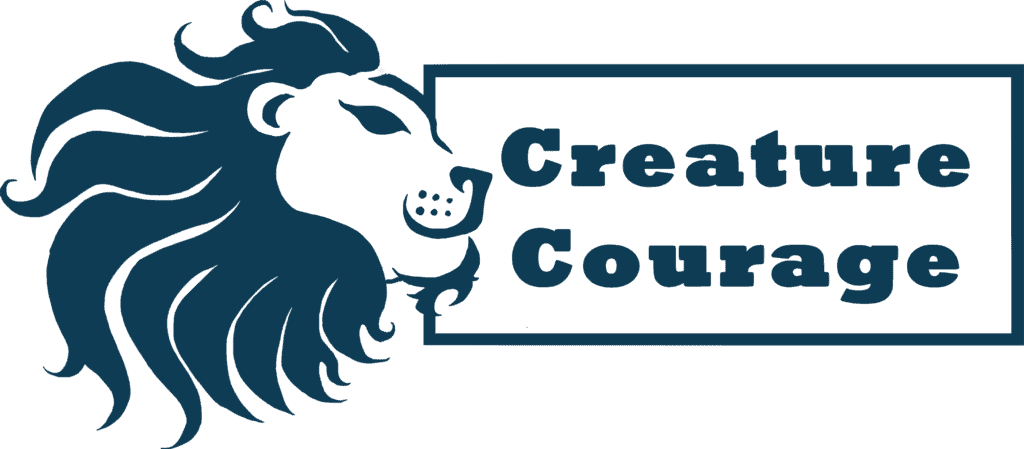
FAQ: Hornet Facts & Phobia
What is the fear of hornets called?
Spheksophobia is the fear of wasps, which includes hornets.
Are hornets dangerous?
Hornets are not inherently dangerous. They only sting when threatened.
Can you get over a hornet phobia?
Yes, most people overcome their fear in just one day with Creature Courage.
Are hornet stings deadly?
Only for people with severe allergies. For most, stings are painful but not life-threatening.
How can I stop being afraid of hornets?
Education, gradual exposure, and therapy with Creature Courage can help you feel calm and in control.
What role do hornets play in the ecosystem?
They help control pests and support biodiversity.
Do hornets chase people?
No, hornets only become defensive when provoked.
Can children develop hornet phobia?
Yes, often by observing adults or experiencing a sting early in life.
How does Creature Courage treat phobias?
We use CBT, NLP, mindfulness, and exposure therapy to build lasting change.
Is it really possible to cure a phobia in one day?
Yes. Many of our clients overcome deep-seated fears in a single empowering session.
